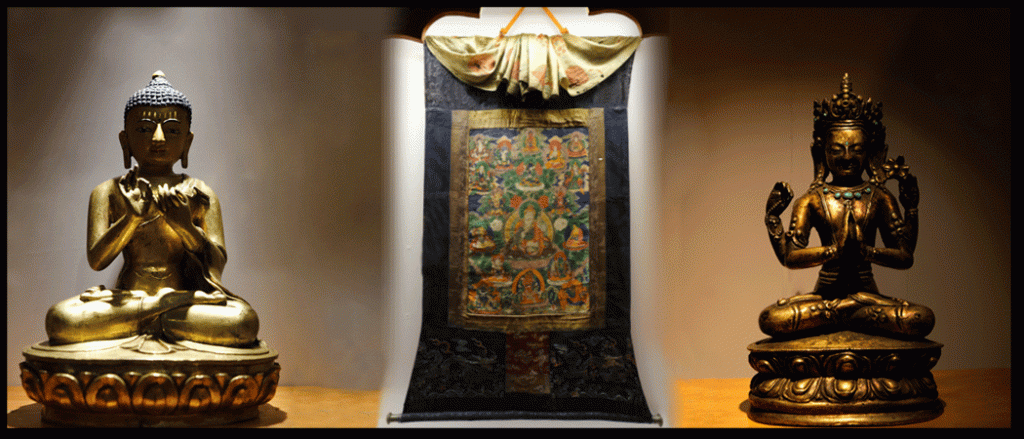
The Chapel of the Wealth Deity
The ‘Namsay Phodrang’ is located in the inner circular chamber on the fifth floor is dedicated to Gyalpo Namthoe Sey (Skt. Vaishravana) along with Namsey Tadgyed or eight yakshas riding on horses. Namthoe Sey is the guardian king of the northern celestial point in Buddhist cosmetology and is associated with wealth and prosperity. In Bhutan he is respectfully called Norlha Namsey and at the time of the museum’s original opening in 1968, the museum was named ‘Namsey Bangdzod’, the Treasury of Wealth-deity instead of the National Museum of Bhutan as it is now known.
The Lord of Wealth is represented by eight manifestations and each of these grants blessings of wealth to each of the four directions. The main lord of wealth or Kubera is found riding on snow lion and surrounded by his eight manifestations. For example, on the east side is located the yellow Zambala, on the south, one can find Gawa Zangpo, to the western side is Norbu Zangpo, and on the north is the Black Zambala. On the south-east stands Yandagshe Serpo, to the south-west, Thronyer Nagpo, in the north-western side Nyetshen Sercha is located and finally to the north-east side we have Zambala Khilwa Karpo.
On the walls of the chamber you can also view various sacred and antique statues cast of precious metals called dzikhim including a 10th century Kadam stupa along with twenty-one Taras carved on slate. The outer sphere of Namsey Lhakhang contains thangka paintings of the Buddhas of three times, past, present and future.
Thangka gallery
The outer galleries of the 5th floor showcases Thangkpa paintings. The art of thangka painting was introduced to Bhutan as early as the 12th century C.E. and unlike other paintings, they are created to contribute to the spiritual fulfillment of a Buddhist practitioner. The subjects of the Museum’s paintings are Buddhas, mandalas, guardian deities, and tutelary deities. There are also very fine paintings displayed of the great Buddhist scholars honorifically known as the Six Ornaments and Two Excellent Ones, and the Buddha’s Sixteen Arhats.
